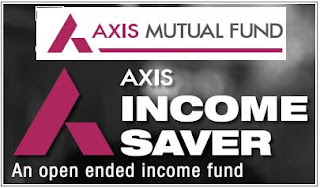In this article, we will analyse how good is this Axis Triple Advantage Fund NFO, whether this Axis Triple Advantage Fund offers anything new or unique for the investors and whether the investors should invest in Axis Triple Advantage Fund .
Axis Triple Advantage Fund NFO: Review Analysis & Details
Let's begin with some basic details about Axis Triple Advantage Fund.What are the NFO dates for Axis Triple Advantage Fund ?
The NFO period for Axis Triple Advantage Fund will open on 30th June and will close on 27th July 2010. Though nothing is specified about the regular buying and redemption start date of this Mutual fund, it is expected that it will be around after a month from the close of NFO, as is the standard.
What is so unique about this Axis Triple Advantage Fund?
Investors should note that the investment principles of this fund is to seek long terms capital appreciation and hence, as per the fund information, the investors are expected to stay invested for long. But please note that this does not guarantee any returns.
Now the unique thing about this fund is that it is offering you a diversified investment opportunity, where your invested capital money will be split across into 3 and invested into the following in the mentioned proportion:
- Shares/Equity and related instruments - 30-40%
- Debt Instruments (Fixed Income Securities) - 30-40%
- Gold ETF's or Gold Exchange Traded Funds - 20-30%
So overall, this Axis Triple Advantage Fund seems to be offering a good mix of 3 variety of products. The proportion of allocation also seems to be good enough. However, I think the proportion of allocation might change at the sole discretion of the mutual fund managers.

During NFO, the units of this Fund will cost Rs 10 per unit.
Ideally speaking, this fund should be looked upon by the investors who want a mix of equity, debt and gold in their investment portfolio, but want to keep the headache off by doing it themselves and are ready to trust a fund manager to do that. This Axis Triple Advantage Fund will be good option for such investors. However, one thing to note is that just because there is a lot of diversification, it does not mean that food returns are guaranteed.
The risk part still remains. What if you invest 10,000 in this fund. The fund managers buy equity worth 3500, debt worth 3500 and gold worth 3000. After 5 years, the returns from equity are down by 30%, returns from debt is up by 10%, and returns from gold are up by 15%. Equity portion will then stand at 2500, Debt at 3850 and Gold at 3450. So your net value will be 9,800 - i.e. less than your invested 10K.
Now the above is only an example to illustrate that just by investing in a diversified fund does not guarantee returns. Also, the more different instruments one invests in, the more brokerage charges and commission is to be paid. That adds to the cost and reduces the profit and returns. Investors should keep these things in mind while making investments in any funds or any financial products.
Are there any alternatives to Axis Triple Advantage Fund?
Yes, Taurus Fund House has also come out with a similar product: Taurus MIP Advantage Fund NFO: Review Analysis & Details. However, there may exist other products.
Another option to consider is buying these different financial assets on your own. But then you will have to take the buy sell decisions and timing them will be your responsibility.
Mr. Chandresh Nigam and Mr. Ninad Deshpande will be the fund managers.
The Axis Triple Advantage Fund will be benchmarked to a composite S&P CNX Nifty, CRISIL Composite Bond Fund Index and INR Price of Gold
Minimum Investment:
Purchases : Rs. 5000/- and in multiple of Re. 1 thereafter.
SIP or Systematic Investment Plan is available? - No Info
No Tax Benefit is available in the Axis Triple Advantage Fund
Investment Options for Axis Triple Advantage Fund :
- Growth
- Dividend (Payout and Reinvestment)
The entry load for Axis Triple Advantage Fund is as follows:
Entry Load for Axis Triple Advantage Fund :
Zero Entry Load
Exit Load for Axis Triple Advantage Fund:
1% if the amount sought to be redeemed or switched out is invested up to 1 year from date of allocation.
Final Thoughts about the Axis Triple Advantage Fund?
This fund can be a good investment for investors willing to bet on the skills of the Axis Fund Managers and who believe that diversification can offer good returns as well as risk control









